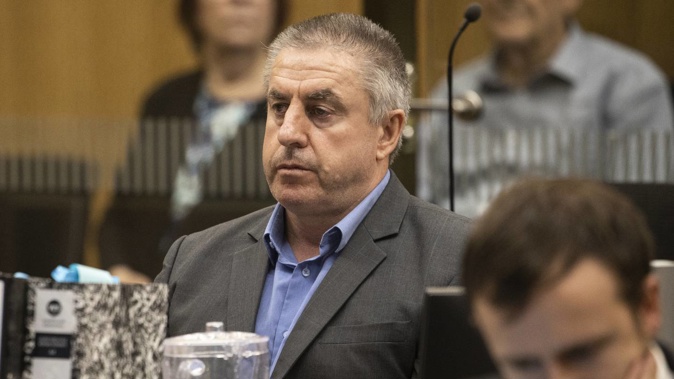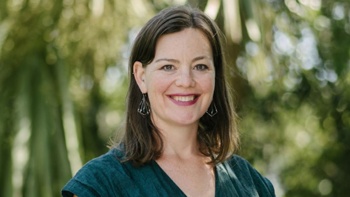
A Christchurch river would have given murder suspect David Benbow a “highly-suitable location” to conceal his close friend and alleged murder victim, a court heard today.
An expert Crown witness also believed that former Corrections officer David Benbow had a “substantial window of time” to kill Michael McGrath on May 22, 2017, transport and dispose of his body, return home, and clean up the crime scene.
Benbow’s murder trial at the High Court in Christchurch has entered its fourth week.
Today, an Australian university professor and private consultant in police intelligence and geo-forensics – “the science of search” – is giving evidence.
Mark Harrison, a former Australia Federal Police head of intelligence, was first contacted by New Zealand Police on June 12, 2017, for help in the “sudden and unexpected disappearance” of McGrath.
In such cases, the last person to see the missing person alive is of critical importance, and likely to be a person of interest in the police probe, he said.
Benbow, 54, was the last person to see McGrath, visiting his Checketts Ave, Halswell house on Sunday, May 21, 2017 to ask if he could visit his semi-rural Candys Rd property at 9am the next day to help him shift some railway sleepers.
But Benbow claims his long-time friend never showed up and denies having anything to do with his disappearance.
/cloudfront-ap-southeast-2.images.arcpublishing.com/nzme/AIEGNWZLMVAUTJYQLN5R3UAFSM.jpg)
Christchurch builder Michael Craig McGrath, 49, was last seen at his home in Halswell, Christchurch, in May 2017.
- No body, no weapon: Who killed Mike McGrath? Friend stands trial for murder
- Vanished builder 'low' suicide risk, expert tells murder trial
- Property police searched for Michael McGrath now up for sale
The Crown claims Benbow shot him dead and got rid of his body, just weeks after telling a counsellor that he wanted to “annihilate” McGrath, who was seeing his ex-partner Joanna Green.
Harrison said that most missing people who are lost or have taken their own lives are usually found within 8km of where they went missing.
The specialist searches, including the use of a police dive squad, which covered local bodies of water, culverts, drains, open farmland, hedgerows, and neighbourhoods were sufficient to tell Harrison that if McGrath had been lost or taken his own life that he would’ve been found.
As foul play was now being looked at, and he was told that Benbow had become a suspect, Harrison says he developed a Geoforensic Search Strategy (GSS) - a model developed to help police in complex searches for victims’ remains.
/cloudfront-ap-southeast-2.images.arcpublishing.com/nzme/BHMN72CVOZCIBGOMQZU6RGT6AE.jpg)
Mark Harrison, an expert in geo-forensics and searching for missing persons, has given evidence at the David Benbow trial in Christchurch. Photo / George Heard
The model includes evaluating an offender or suspect’s motivations and resources, behavioural, profiling, victimology assessments, management of search assets, logistical and tactical planning, acquisition of aerial imagery, determination of search types, press and media management, crime scene management, forensics, and briefings.
Today, Harrison told the court that homicides of people well known to an offender can be well-planned, both in the act of killing, as well as the disposal of the victim.
“These present the most challenging search scenarios as the offender has usually undertaken extraordinary effort in the planning and subsequent disposal of the victim with the sole aim of ensuring an enduring concealment of the victim’s remains and to frustrate and obstruct any police investigation and search activity,” Harrison said.
From the Sunday night of May 21, 2017, when McGrath was at home and speaking to people on the phone, to when police officers showed up on the evening of Tuesday, May 23 at Benbow’s house after getting a missing person’s report, Benbow would have had a “substantial window of time” to kill McGrath, transport and dispose of his body, return home and clean up the crime scene, Harrison said.
It was “more than sufficient time to achieve these actions”, he said, while stressing that he was not commenting on whether Benbow was responsible for McGrath’s disappearance.
In homicides, water features as most the preferred method of disposal, where it is accessible and follows the “least effort principle” of disposal, Harrison told the court.
While movies often show criminals digging graves for victims’ bodies, in real life it is rare due to the effort required, he said.
A body disposal area is usually known to the offender, Harrison said, easy to access, has clear, permanent identifiable features or markers, like a large conspicuous boulder, and has a good chance of not being seen by any potential witnesses.
After looking at the case, Harrison concluded: “I am therefore of the opinion that the Halswell River and wetlands would’ve afforded Benbow a highly-suitable location to conceal and dispose of McGrath.”
Benbow could have parked close to the river and carried McGrath’s body, perhaps using a tarpaulin or other wrapping, the witness said.
“In this case, Benbow had a significant window of time to conduct effective reconnaissance and even through trial and error choose the most suitable location with the highest probability of concealment within a short distance of where he could’ve parked his vehicle on any of the aforementioned access points to the Halswell River,” he said.
Digging a shelf into the side of the riverbank would’ve been easier than digging downwards, Harrison said.
But given the changeable, dynamic nature of the river, if McGrath’s body had been there, “his remains may have already been removed either through natural forces, flushing, or those undertaken by the land management processes.”
A “flushing effect” was a highly-likely scenario, Harrison said, meaning a body buried into a riverbank could have been washed into the river, potentially out to Lake Ellesmere which the river feeds into, and even further out to the open ocean.
/cloudfront-ap-southeast-2.images.arcpublishing.com/nzme/Q5TT7K6BYFBOTF34ET5YENS2LU.jpg)
The trial is ongoing at the High Court in Christchurch. Photo / Kai Schwoerer, Stuff, Pool
A 2km section of the river was searched by NZ Police, using dogs, divers and search experts, between July 9 and 13 2017, the court heard.
Harrison said it would’ve been “extremely challenging work” given its dynamic, changing nature.
“While further searches could be considered they would require careful planning and resourcing due to the complex and dynamic nature of the search area.”
In August 2017, Harrison advised Operation Renovation detectives to release a “tactical” media statement which said police were working with an international search expert and had identified geographical areas of interest in the greater Christchurch area that specialist search teams would focus on.
The court earlier heard that a secret tracking device had been fitted beneath suspect Benbow’s car which showed him make two trips - on August 6 and 7, 2017, just after the planned police media statement – to two rural locations near the Halswell River.
They were the only times he went to that area in five months of surveillance, the Crown claims.
Previous experience suggests to Harrison that offenders find it “irresistible” to visit the area or to do “drive-by checks” to maintain the confidence of concealment and to see what police or media presence there was in the area.
Under a lengthy cross-examination by Benbow’s lead counsel, Marc Corlett KC, Harrison vehemently denied being an “extension” of the police who worked on the McGrath investigation.
Benbow’s defence team earlier warned the jury of “investigative bias” and “tunnel vision” from police early in its investigations who they claim were trying to find evidence to support their case.
While the Crown accepts there is no body, no murder weapon, and little forensic evidence in the case, it says there is a strong circumstantial case consisting of many threads that, when taken together, show Benbow is guilty of McGrath’s murder beyond a reasonable doubt.
The trial, before Justice Jonathan Eaton, continues.
Take your Radio, Podcasts and Music with you









